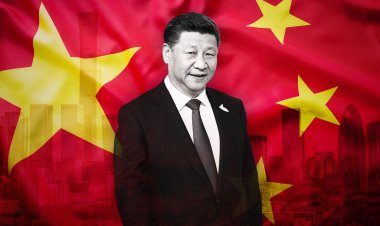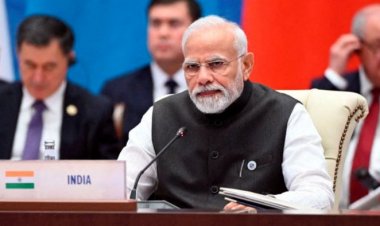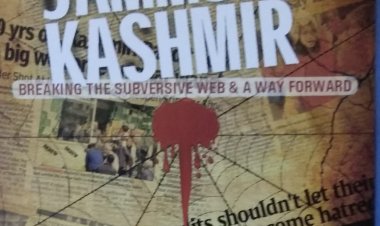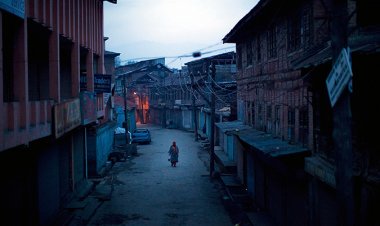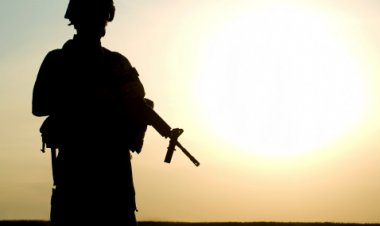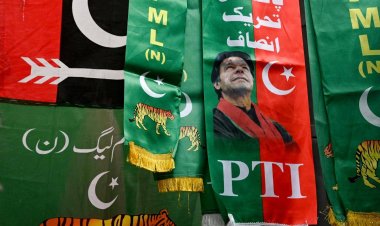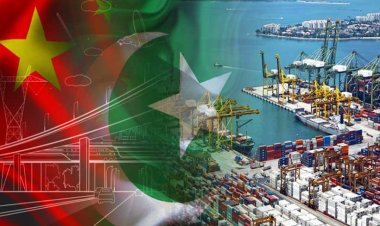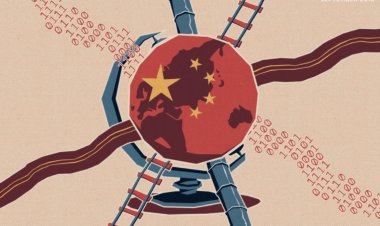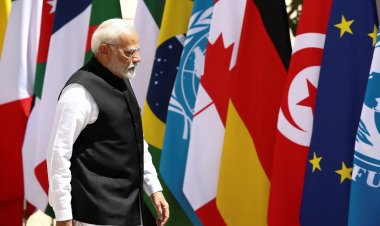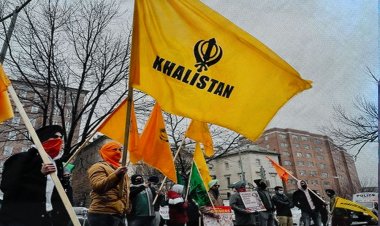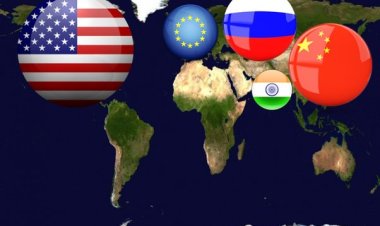China's Military Power: How big of a threat is China to its neighbors?
The article discusses the Chinese military capabilities. It also gives the background of how many wars the PLA has fought in the past and its doctrine.
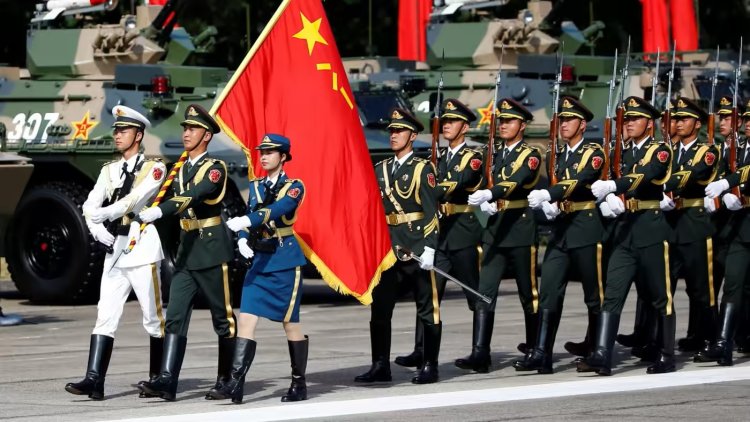
Analysis
By Peder Foss
China's economic and political power has increased since Deng Xiaoping decided to be more progressive economically. It has been proven successful for China since the 1980s. The Chinese military has modernized and the Chinese navy has been transformed from a brown navy to a blue navy with aircraft carriers. The Chinese army has also transformed to be a force with a focus to win high-intensity combat against a peer enemy. The Chinese air force has developed fifth-generation fighters.
How big of a threat is China to its neighbors? China has been in border conflicts with all of its neighbors, except Laos. China intervened in the Korean war when the UN forces approached the Chinese/Korean border. The Chinese intervention resulted in a stalemate along the 38th Parallel and an armistice. The death of Joseph Stalin worsens the relations between the Soviet Union and China. There were some intense clashes between the Soviet and Chinese forces along the border. The result was not flattering for the Chinese government.
China fought another war with Vietnam when Vietnam intervened in Cambodia after clashes with the Khmer Rouge. China supported and was allied with Pol Pot and the Khmer Rouge prior to the Vietnamese intervention.
The war between China and Vietnam did not end in the favor of the Chinese forces. In fact, the Chinese forces were defeated by the Vietnamese reserve and home guard forces. The Chinese less desired achievements during the war caused the Chinese to reconstruct the military and update the military doctrine.
The Chinese military began to focus on enhancing the military equipment to conduct highly mobile and mechanized warfare. Have they been successful? Difficult to say, although, the modernization process has produced a lot of new equipment, even though a lot of the Chinese weapons and vehicles are replicas of Soviet/Russian equipment. The Chinese military contains about 3.3 million service personnel divided between the army, the air force, the navy, the rocket force, the strategic support force, the people's armed police force, and the reserve force. All Chinese citizens are obliged to serve in the armed forces. Although, not all do when the number of volunteers is sufficient to keep the armed forces with people.
The Army
The Chinese army has about 7000 main battle tanks, but the majority of them are the old Type 59, which is a Chinese version of the T-54, the Chinese have about 2900 Type 59. Type 59 has a 100mm main gun, and a crew of four. In addition to these old main battle tanks, the Chinese army has about 500 Type 79 and Type 88. These tanks have a 105mm main gun and the latter a stabilized sight. The modern tank fleet contains about 2900 tanks. The Type 96 and the Type 99. Both of them have 125mm guns and resemble the Soviet/Russian-made T-72.
The Chinese army has about 35,000 armoured vehicles. The main infantry fighting vehicle is the Type 04 IFV, it is similar to the Russian BMP3 and shall operate with the Type 96 and Type 99 main battle tanks. The Chinese army has developed its own tracked amphibious infantry fighting vehicle (ZBD05) and a tracked amphibious assault gun (ZLT05). The Chinese army has a BMD-based tracked infantry fighting vehicle for their airborne units, the ZDB03. This vehicle can be deployed by parachute.
The Chinese army has also developed several wheels. The basic version is a personal carrier, but the Chinese have command, recovery, and artillery vehicles based on the ZBD09. The Chinese army or the police have an armored vehicle, the WZ 551. The army also has several different support vehicles such as anti-tank vehicles like the WZ91 which is equipped with the Hong Jian 9 ATGM system. There is also an assault gun vehicle with a 100mm gun on the same chassis as the WZ 551.
The Chinese artillery contains about 3800 self-propelled howitzers, about 3600 towed howitzers, and about 2600 rocket systems. In addition to the artillery systems, the Chinese army has the AF 902 Type 902 artillery radar system, the number is yet unknown. The vehicle is also used for air defense and is issued with SAM and anti-aircraft guns. The Chinese surface-to-air missiles (SAMs) are for the most part derivative of the Soviet Union-era SAMs, especially the SA-2 Guideline missile. There are more modern SAMs in the Chinese air defense and seem to be similar to the S-300 SAMs the Chinese army has about 65 launchers of the Chinese version of the S-300, the HQ-9, and the HQ-12 systems.
The Air Force
The Chinese air force has between 3700 to 4000 airplanes (including the navy aviation and the army aviation). These are divided into about 1 800 fighter planes, the J-10C, the J-11A, and the J-16 as the fourth generation fighters. In addition to these fighter planes, the Chinese have the J-20, a fifth-generation fighter that increases their air- to air capacity significantly. The Chinese air force has about 250 fighter bomber planes and an unclear amount of ground attack airplanes. The Chinese air capabilities are increasing with the development of UAVs for both reconnaissances and delivery air strikes. The Chinese are also developing new bomber airplanes for conventional and nuclear strikes. The transport capabilities are also increasing with additional transport planes for their six airborne brigades.
The Navy
The Chinese navy has increased a lot and it is still increasing. From having about 340 ships, the Chinese are planning to have 400 ships by 2025. The Chinese navy is aiming to challenge the US navy and protect their trade routes. It has two aircraft carriers and a third is on its way to being operational. The Chinese navy has about 50 destroyers, 43 frigates, 72 corvettes, 107 missile boats, 3 helicopter assault ships, 8 amphibious assault ships, 72 landing ships, 8 ballistic missile submarines, 12 nuclear attack submarines, 58 attack submarines, and additional auxiliaries ship.
The Doctrine
China is flexing its muscles and modernizing its armed forces. There is something different with the Chinese armed forces, it is the communist party's military, not China's. There are signs the Chinese are changing their military concepts, especially in the land forces and how the operational use of mechanized forces. This is probably a lesson from the war in Ukraine and how to use the main battle tanks on the battlefield. Tanks were first used in the battle of Flers-Courcelette on the 15th of September 1916. These tanks were used as support for the infantry to break the deadlock. The Second World War changed the operational concept of tanks to be the main fighting force to break through the enemy's defenses. The entire cold war doctrines were based upon the operational concept of the Second World War. The war in Ukraine has changed the operational concept again, going a full circle, back to the original concept, i.e to have the tanks support the infantry instead of having the infantry support tanks.
There are uncertainties about the Chinese command structures. The Chinese exercises indicate a centralized command structure and lack of coordination between ground and air forces. However, a command structure, regardless if it is societal or military is based on traditions. China's response to the outbreak of the COVID pandemic indicates a very strict structure when the lower-ranked officials are afraid of their leaders and wanted to hide what happened. It is difficult to say if the lower-ranked military officers are allowed to be flexible and if their commanders trust them enough to make the necessary decisions on a battlefield. Another aspect of how effective a military force is as if the military is corrupt or not. The Chinese government has cracked down on corruption and is admitting it is still a problem in Chinese society. There is a risk of corruption in the military leadership and it will have an impact on their performance on the battlefield.
The Neighbors
Should the neighbors be concerned about China? The Taiwanese are concerned, but are the other neighbors concerned about the modernization of the Chinese military? They most likely are concerned about it and what the Chinese are planning to do with their military. China is engaged in island-building activities in the South China Sea. Japan and South Korea are concerned about the threat to their trade routes.
India has been at war with China twice and it is worried about the ongoing border tensions between the Indian and Chinese military at Galwan. India has purchased a lot of military equipment from Russia and that can be a problem because of different reasons. Russian military equipment is robust and easy to use. In addition to that, it is cheaper than American and European equipment. This can urge India to produce its own military equipment. It can be good to have the know-how about these things. But the cost of developing weapons tends to be much higher than anticipated, so getting the weapons out to the forces can be delayed. It can be better if somebody else takes that cost and all the delays.
The war in Ukraine has shown to shortcomings of Russian weapons, especially their tanks have suffered tremendously when the Russian armor units faced Ukrainian infantry with modern anti-tank weapons. This would be a concern for all countries using Russian tanks, and it also depends on how to use tanks on the modern battlefield. Russian tanks have a lesser ability to survive than their western counterparts, but these tanks are heavier and require good logistics. There is one interesting MBT on the market and that is the South Korean K2 Black Panther. Turkiye and Poland are buying the K2.
The war has also shown what modern artillery can achieve on the battlefield. To have a fast-moving howitzer that can regroup fast after firing has shown how vulnerable armed forces supplies are. We all can observe the war in Ukraine and take notes. All wars are different in nature from each other, what we can observe is how lessons learned from previous wars are implemented into new doctrines and new technologies are developed to be tested in new wars. What never changes is humanity, we have been here for about 2,00,000 years and we are still a violent species. To study wars is to study human behavior and the causes and the reasons for war are quite often rather ridiculous, almost naive reasons sometimes. However, war is inherent to foreign policy, thus they will continue to happen.
Disclaimer: This paper is the author's individual scholastic contribution and does not necessarily reflect the organization's viewpoint.

